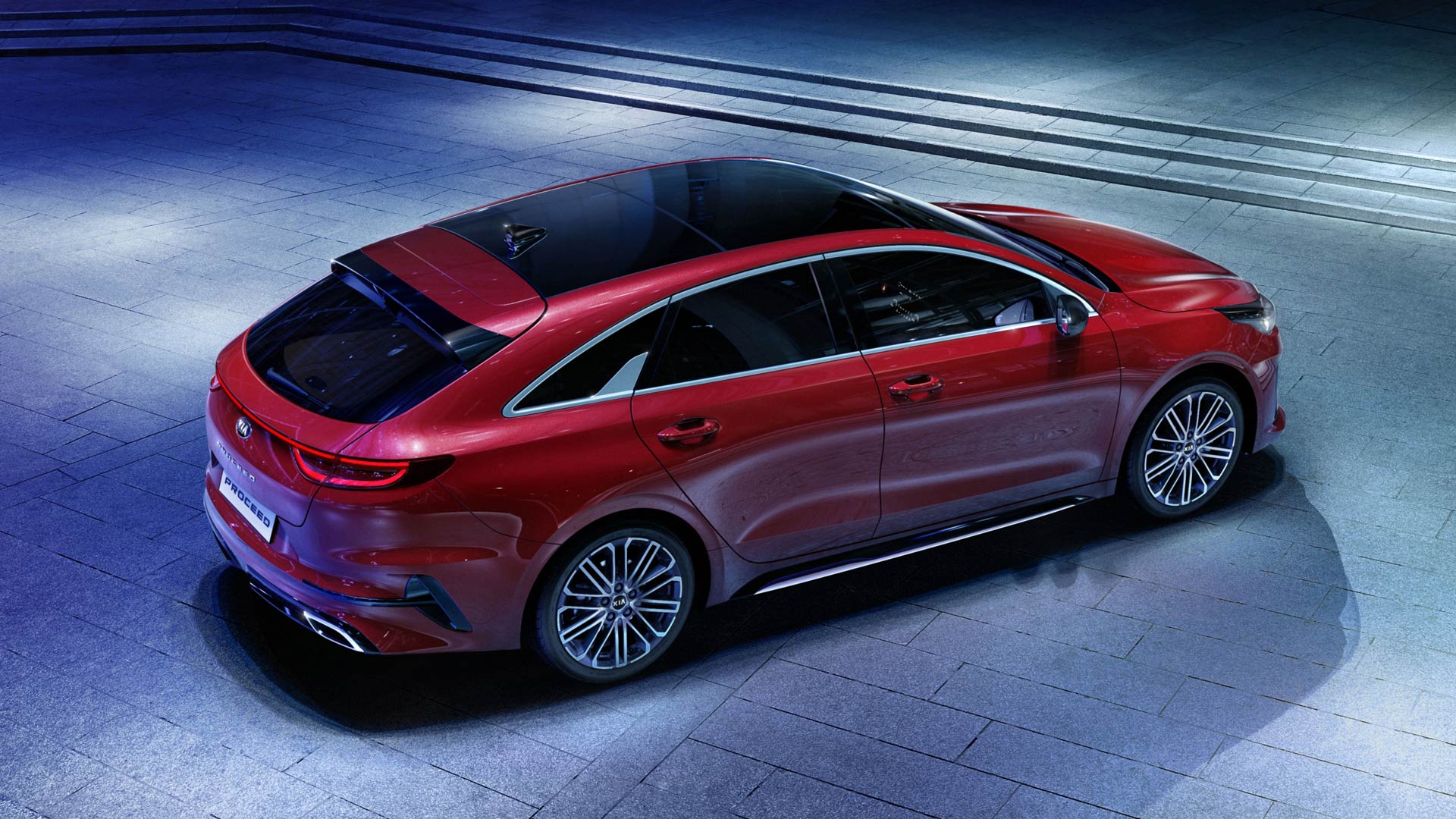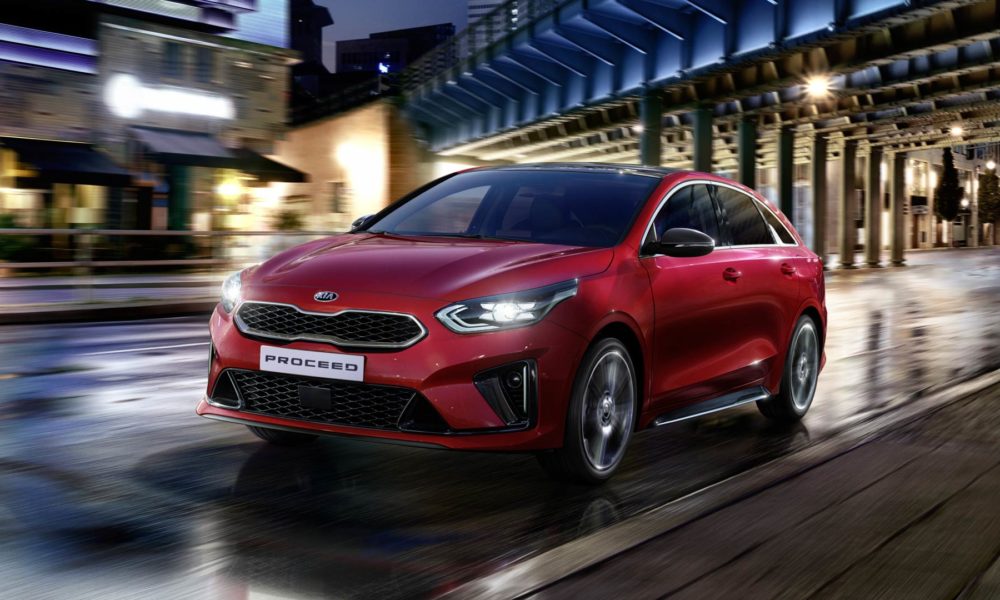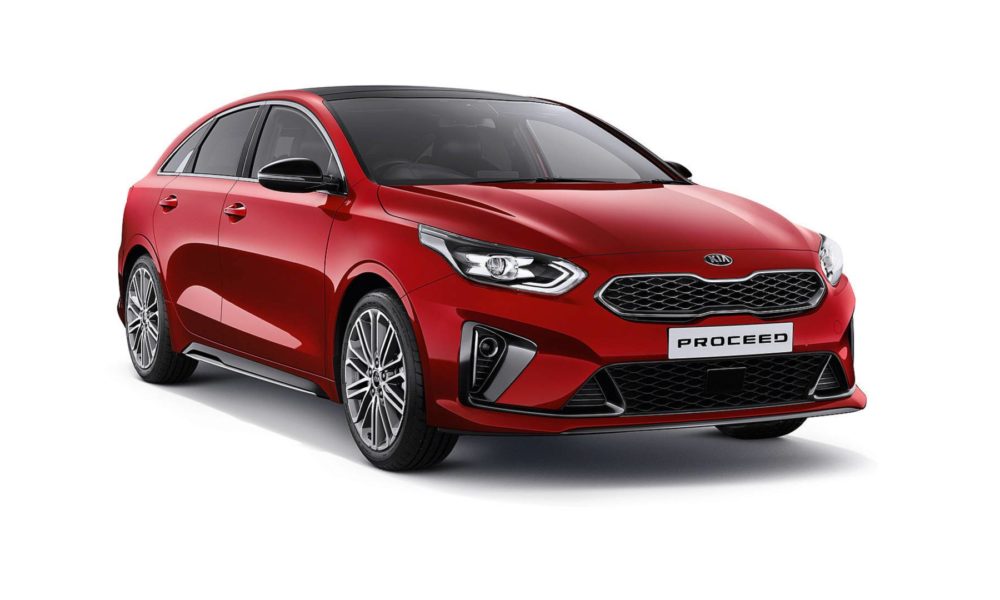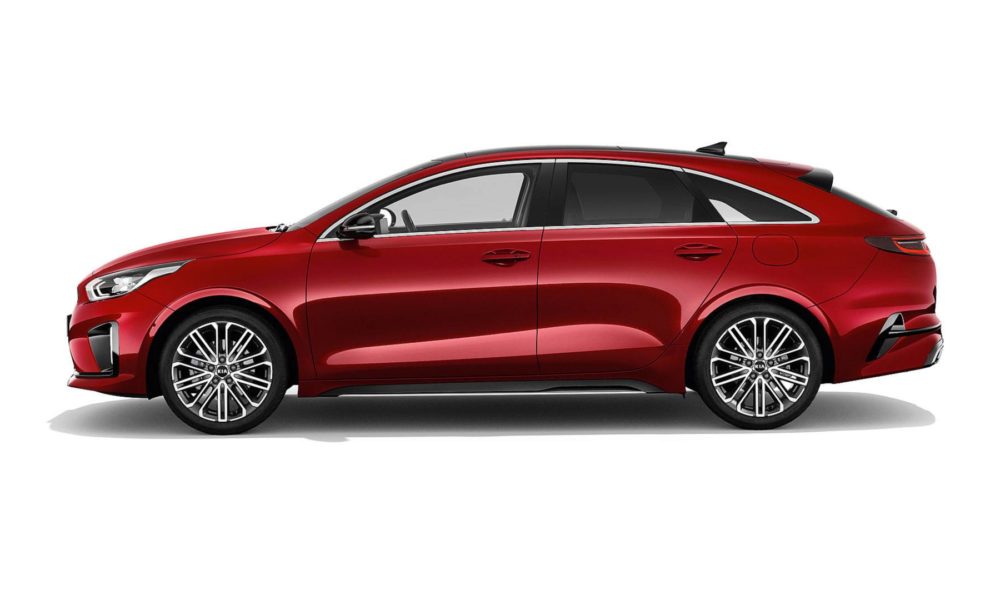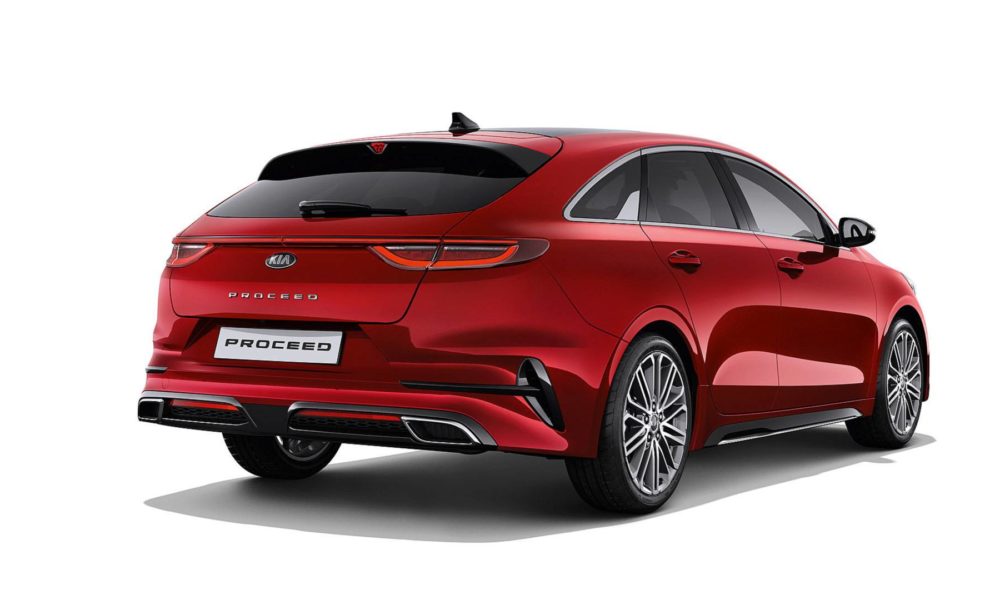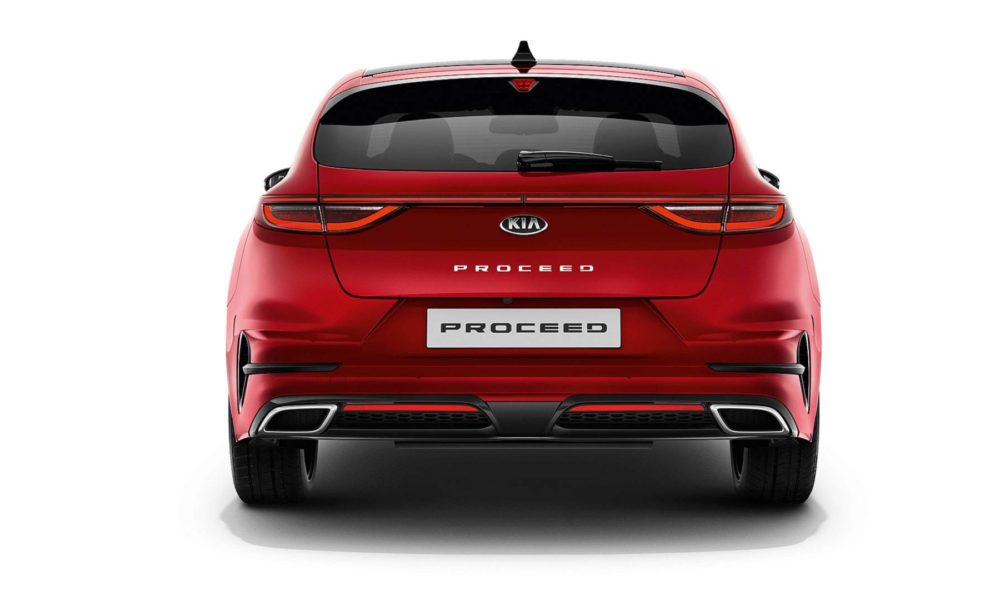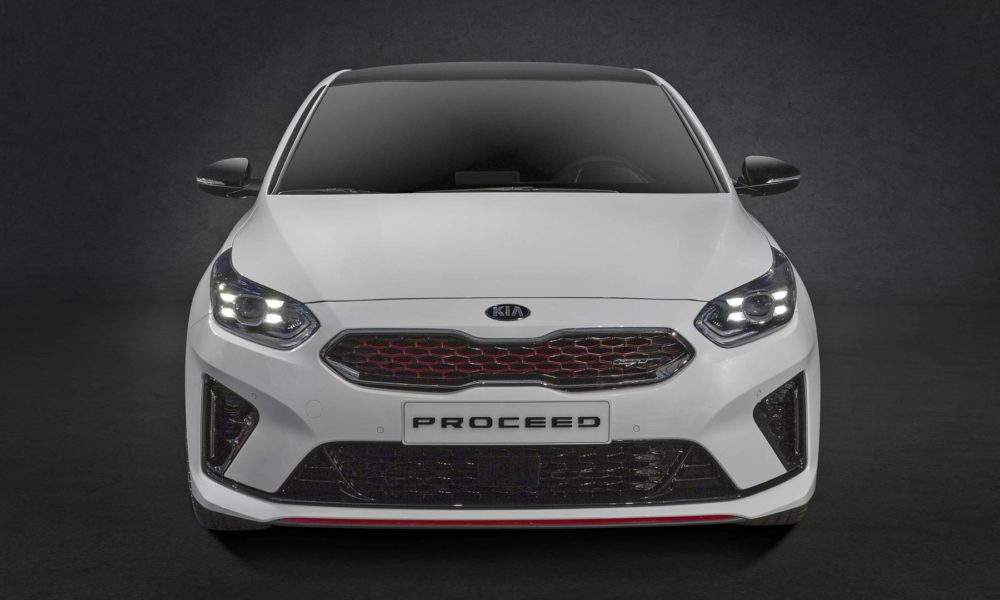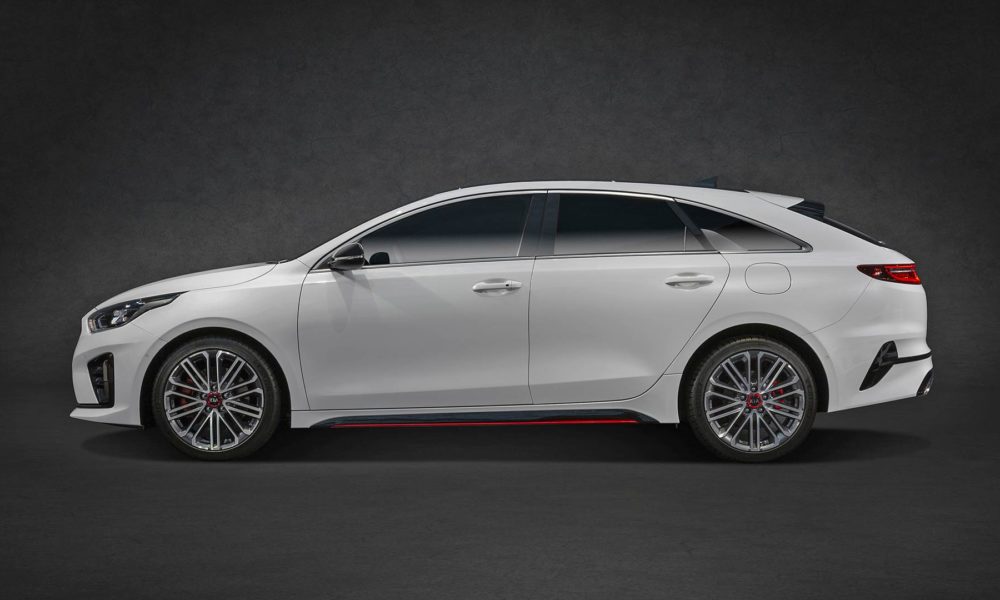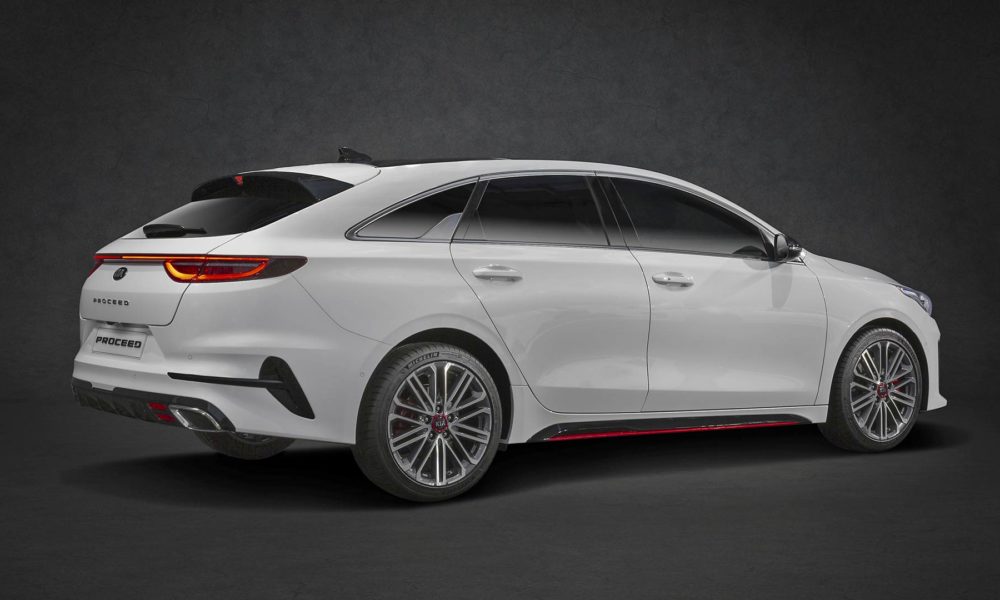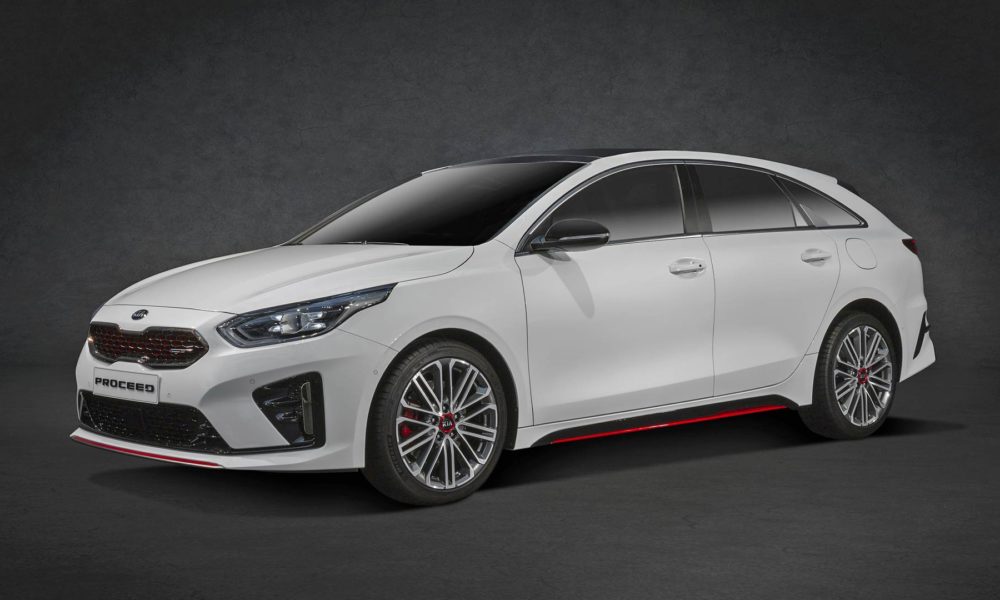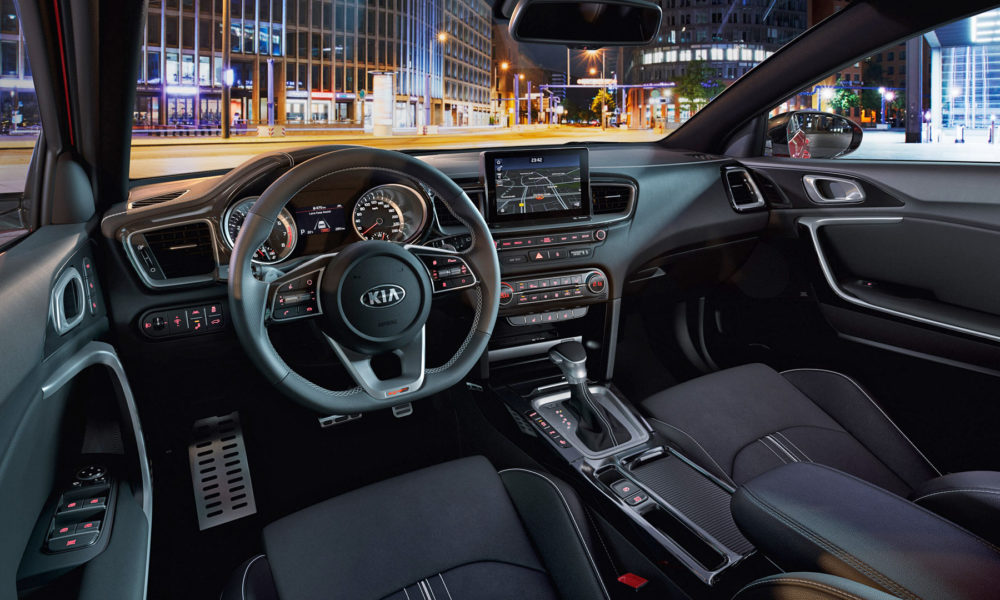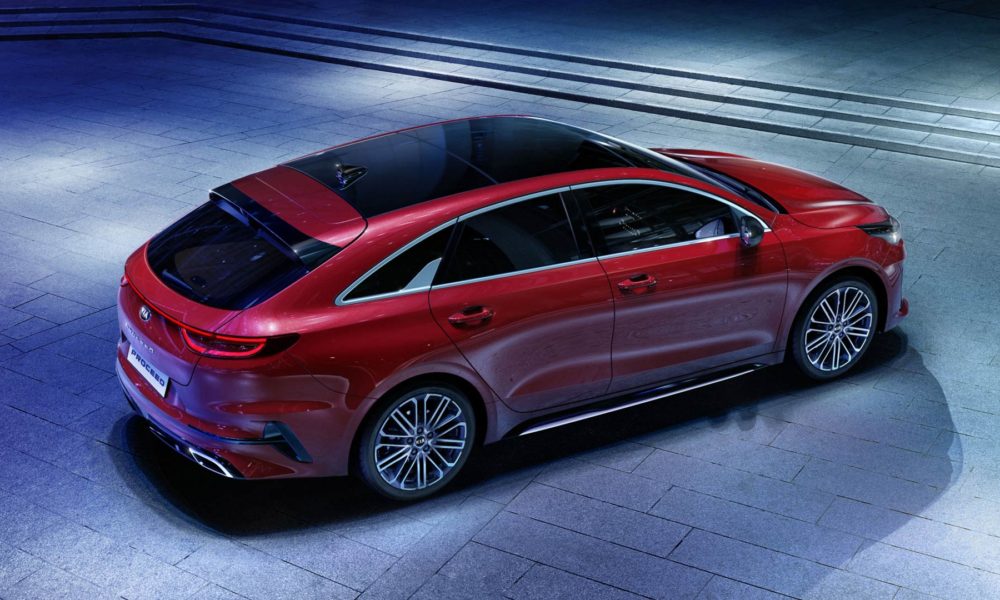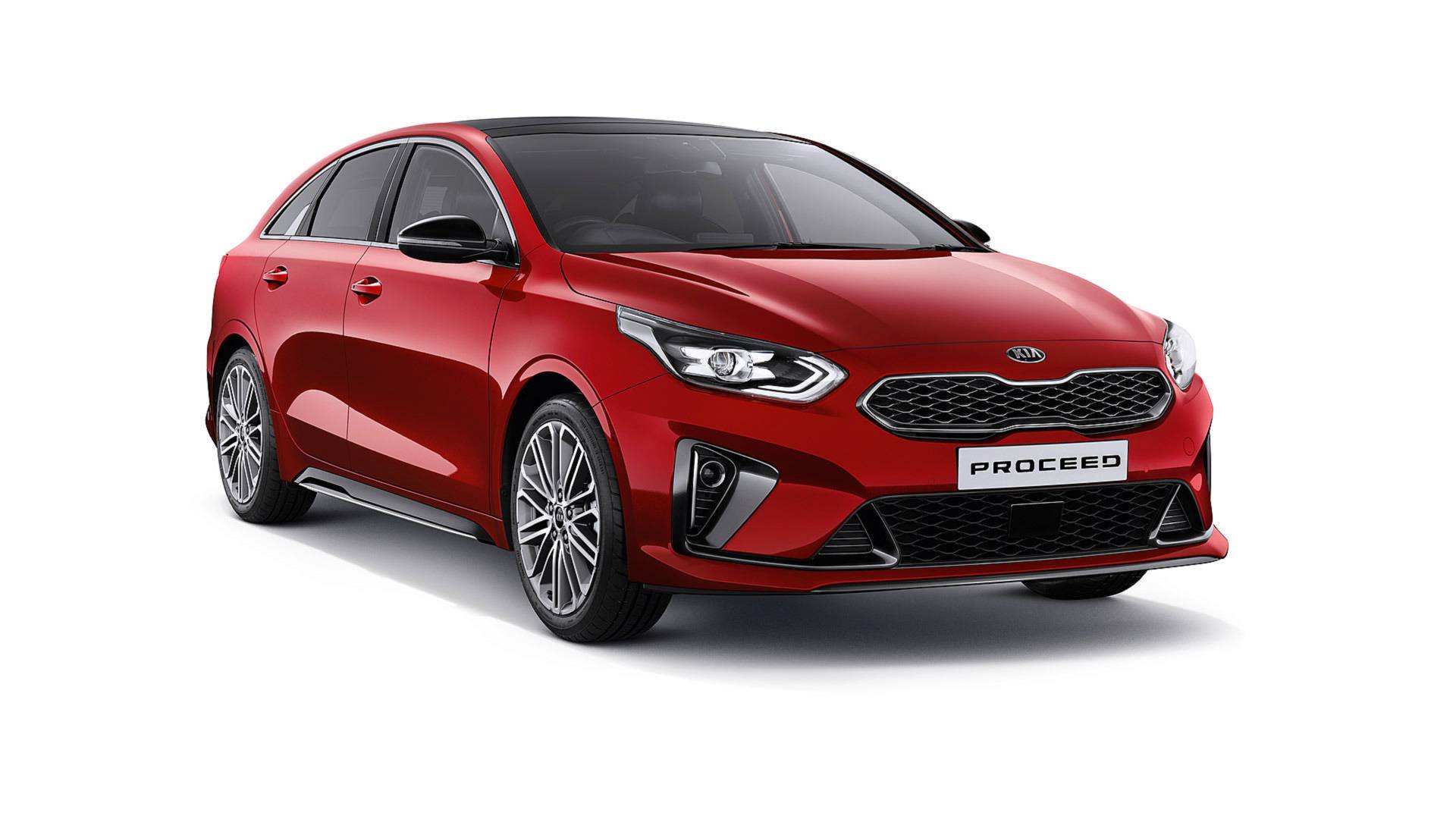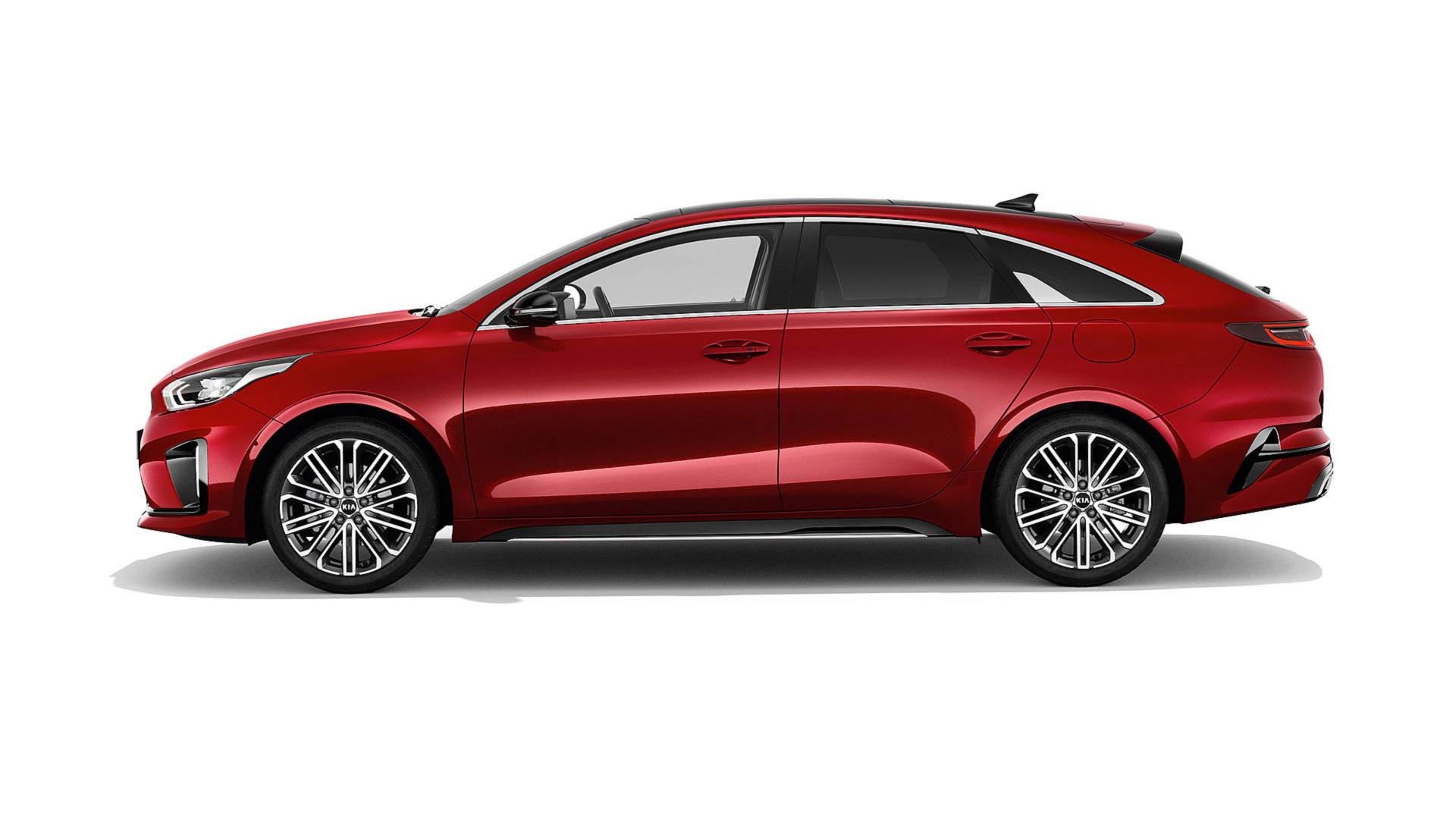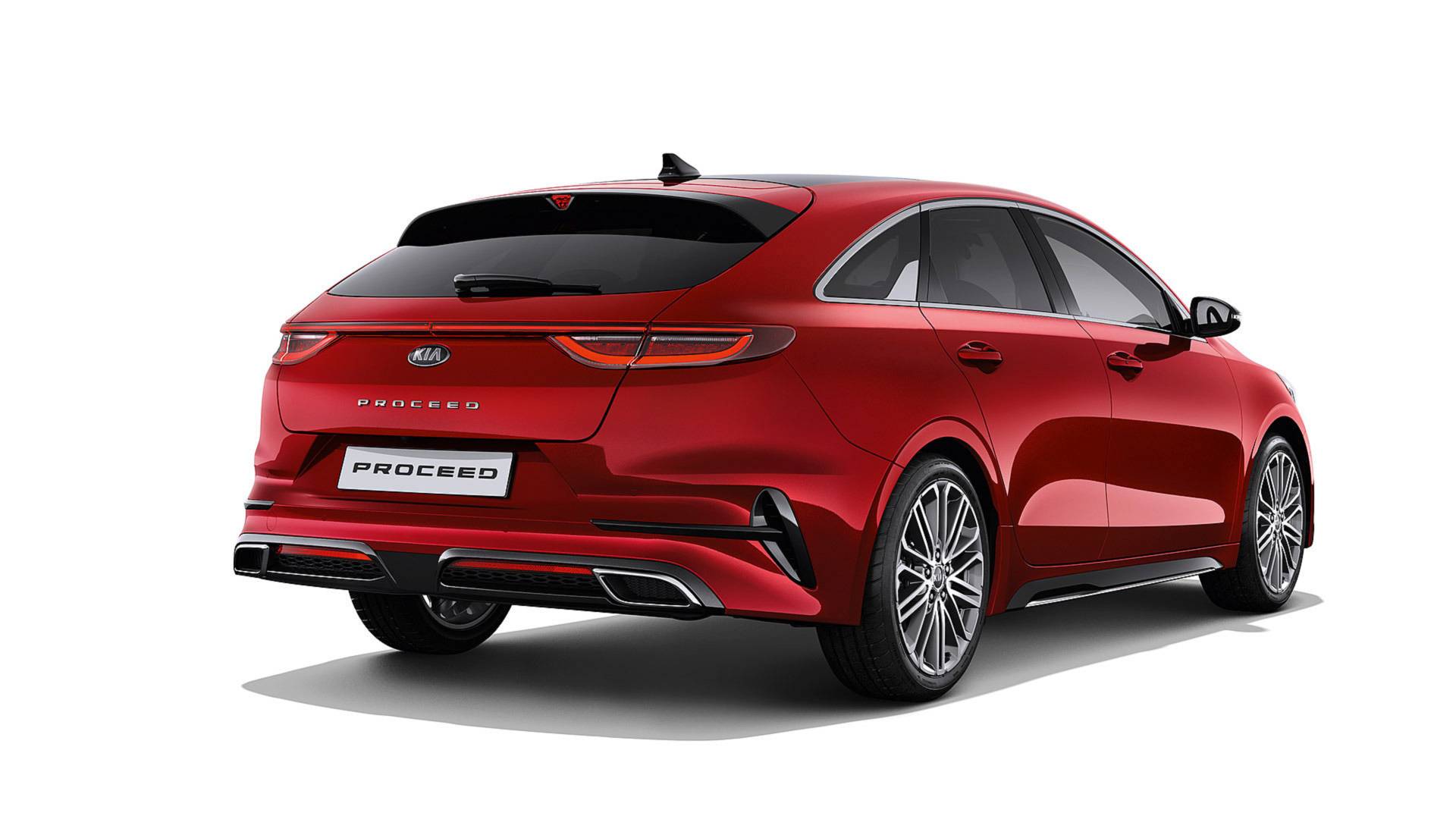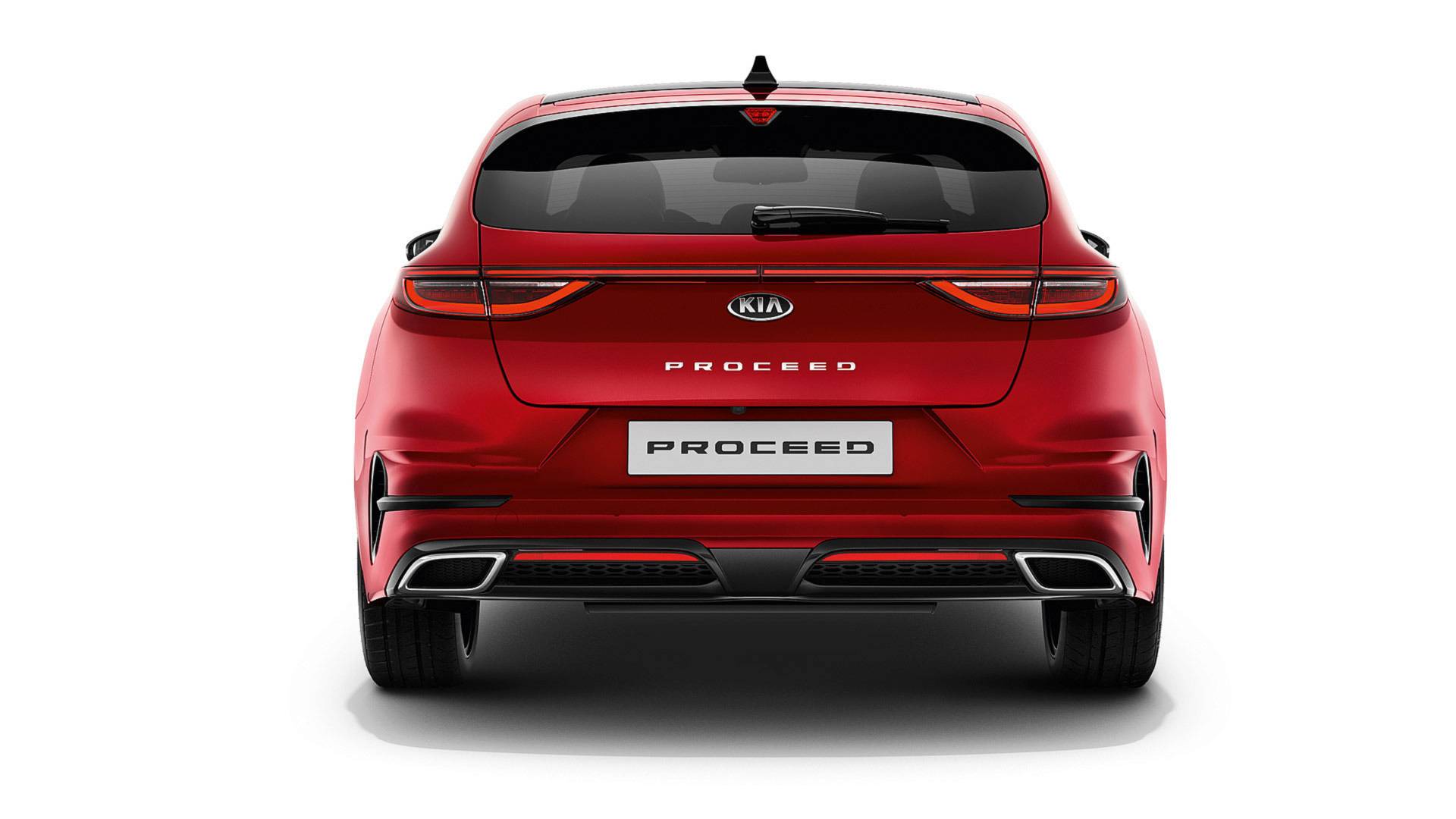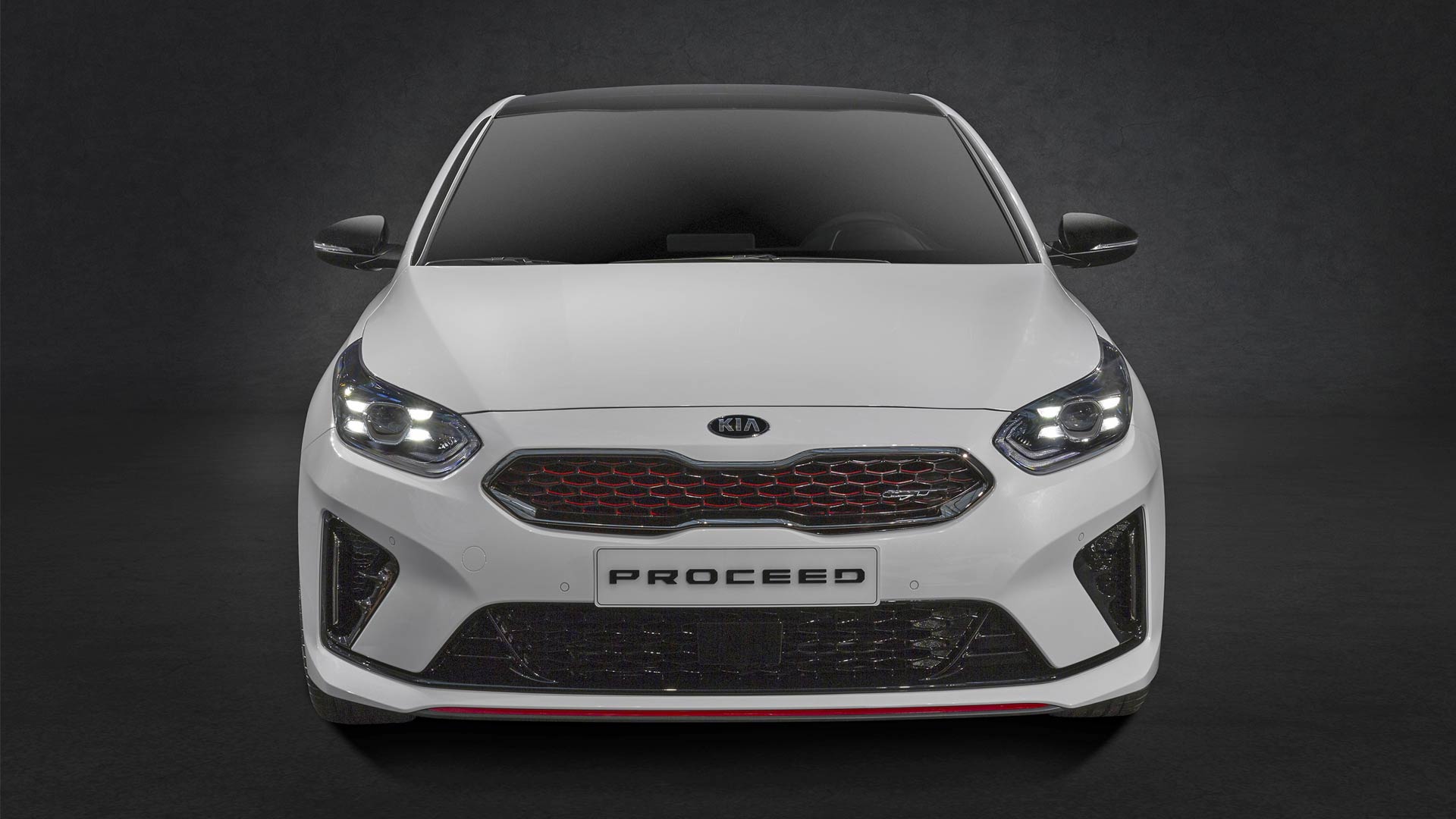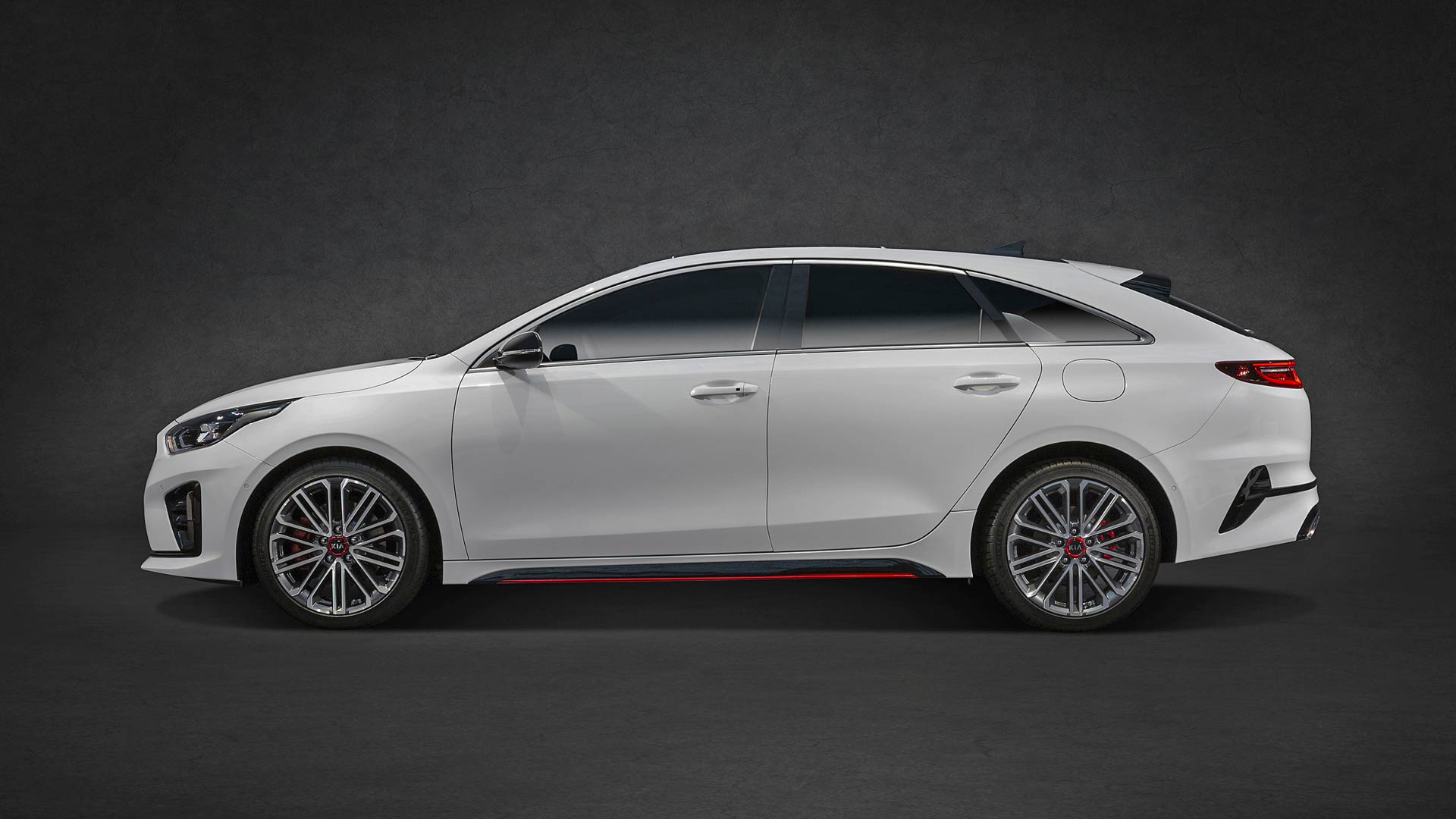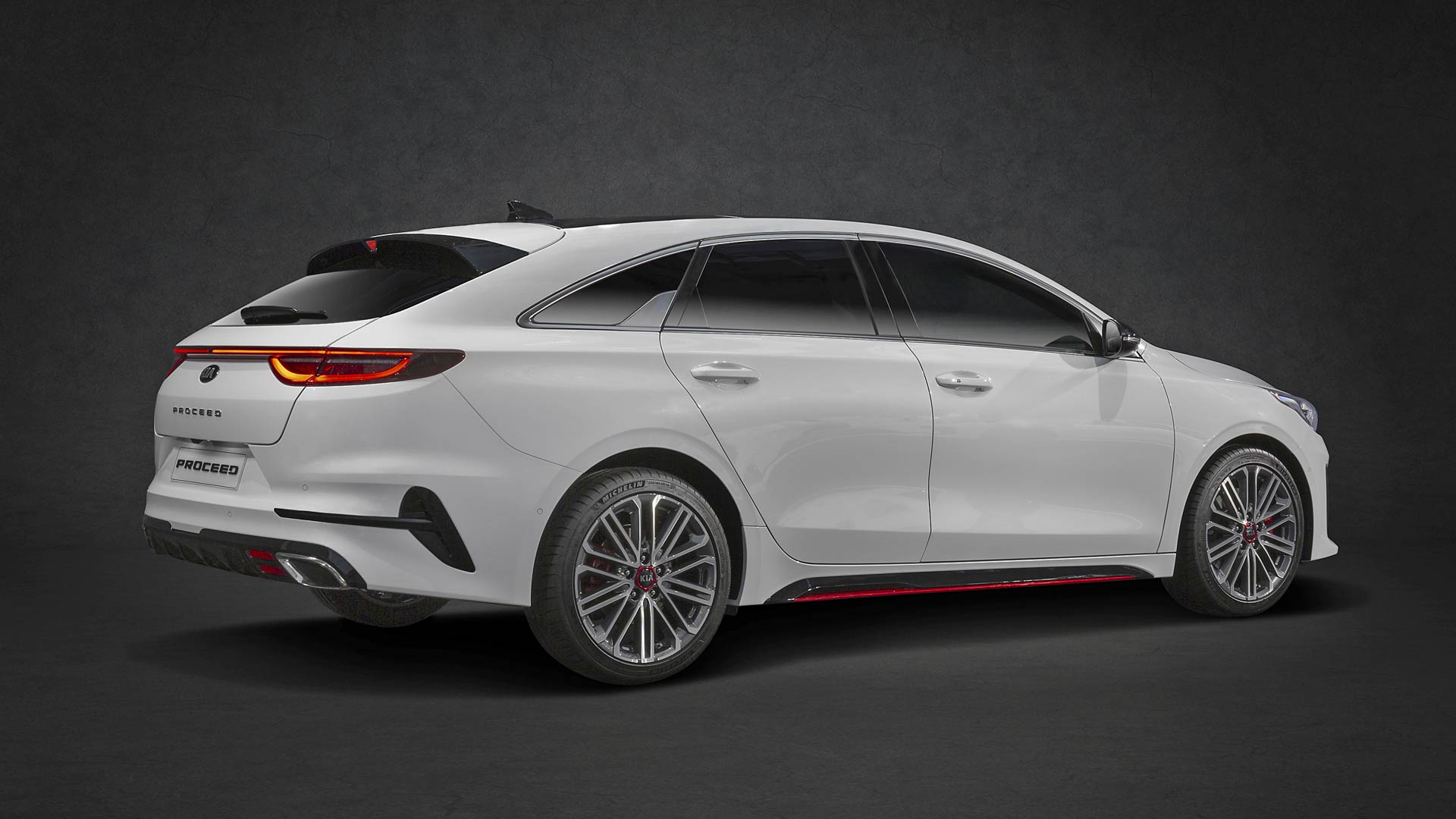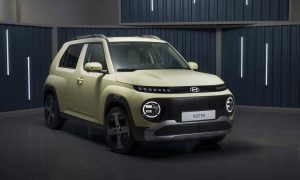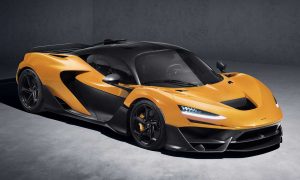If you already like this car, you’ll be more disappointed to know that Kia goes on to add the word “exclusive”, meaning the ProCeed you’re seeing here, is exclusive for the European market. It’s a new, shooting brake version of the Kia Ceed family which already has a hatchback and station wagon.
Long story short, just like the Stinger, the ProCeed too is designed at Kia’s European design centre in Frankfurt, Germany, by Peter Schreyer and his team, and engineered by Albert Biermann — former boss at BMW’s M division. The white one here in the photos is a more sportier ProCeed GT.
Gregory Guillaume, European Head of Design, said — “Europe’s shrinking market for three-door hatchbacks brought the future of the pro_cee’d (3-door hatch) in question. But it was equally inconceivable that we would simply kill off the pro_cee’d.”
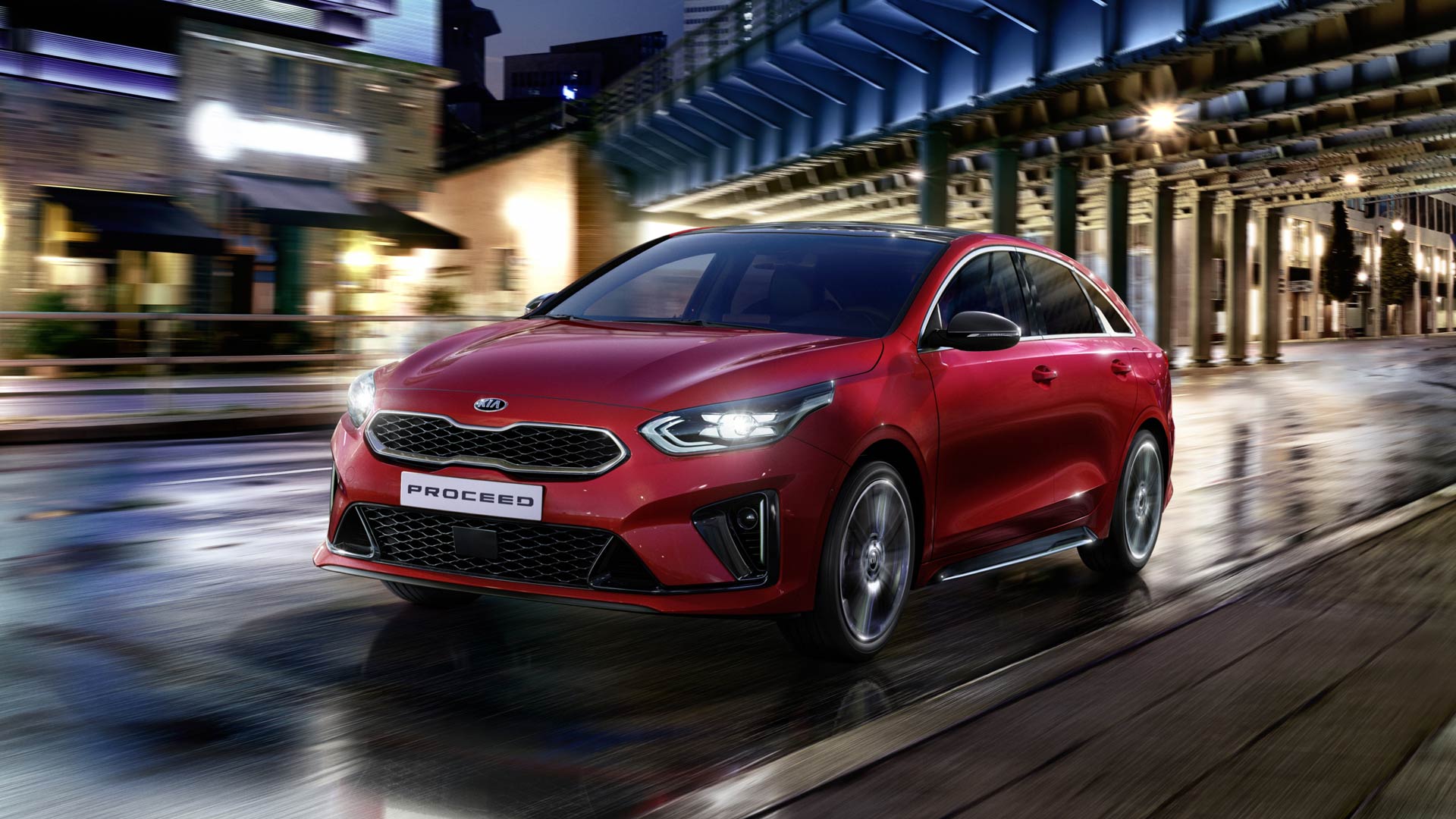
“We needed to reinvent the pro_cee’d to ensure that all that vitality and vibrancy wasn’t simply lost. It had to be a model that not only sat at the top of the current Ceed family, but one that was also immediately identifiable as the most emotionally engaging car in the range. The result is the striking all-new ProCeed,” adds Guillaume.
At 4,605 mm long, the ProCeed is 5 mm longer than the Ceed Sportswagon, with a longer 885 mm front overhang. At 1,422 mm in height, its roofline sits 43 mm lower than that of the Sportswagon, while ground clearance is reduced by 5 mm, to 135 mm. Built on the same ‘K2’ platform as other Ceed models, the 2,650 mm wheelbase remains unchanged. The new model also retains the same 1,800 mm width as the Ceed 5-door hatchback.
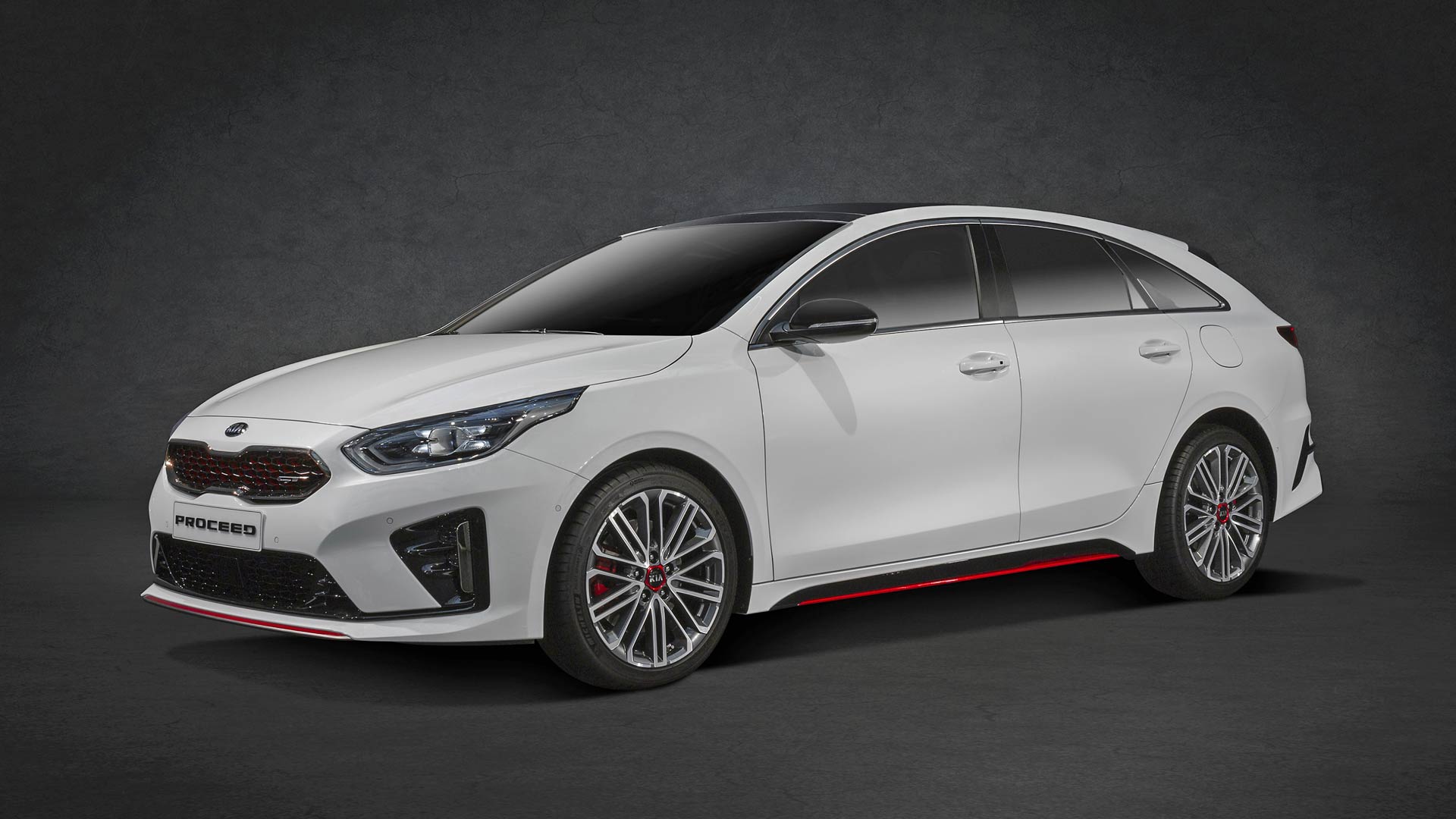 Kia ProCeed GT
Kia ProCeed GT
There’ll be ProCeed, ProCeed GT Line and Proceed GT. Buyers of the GT Line can specify 17- or 18-inch aluminium alloy wheels, while the ProCeed GT models are fitted with 18-inch wheels as standard.
“The ProCeed takes the Ceed model family in a bold new direction. Where the Ceed Sportswagon majors in practicality, the ProCeed provides couples or young families with the space and versatility of a wagon, combined with an emotive, swept-back design. Where focusing on one of these normally compromises the other, the ProCeed is the first car in the mainstream segment to combine both,” said Emilio Herrera, COO, Kia Europe.
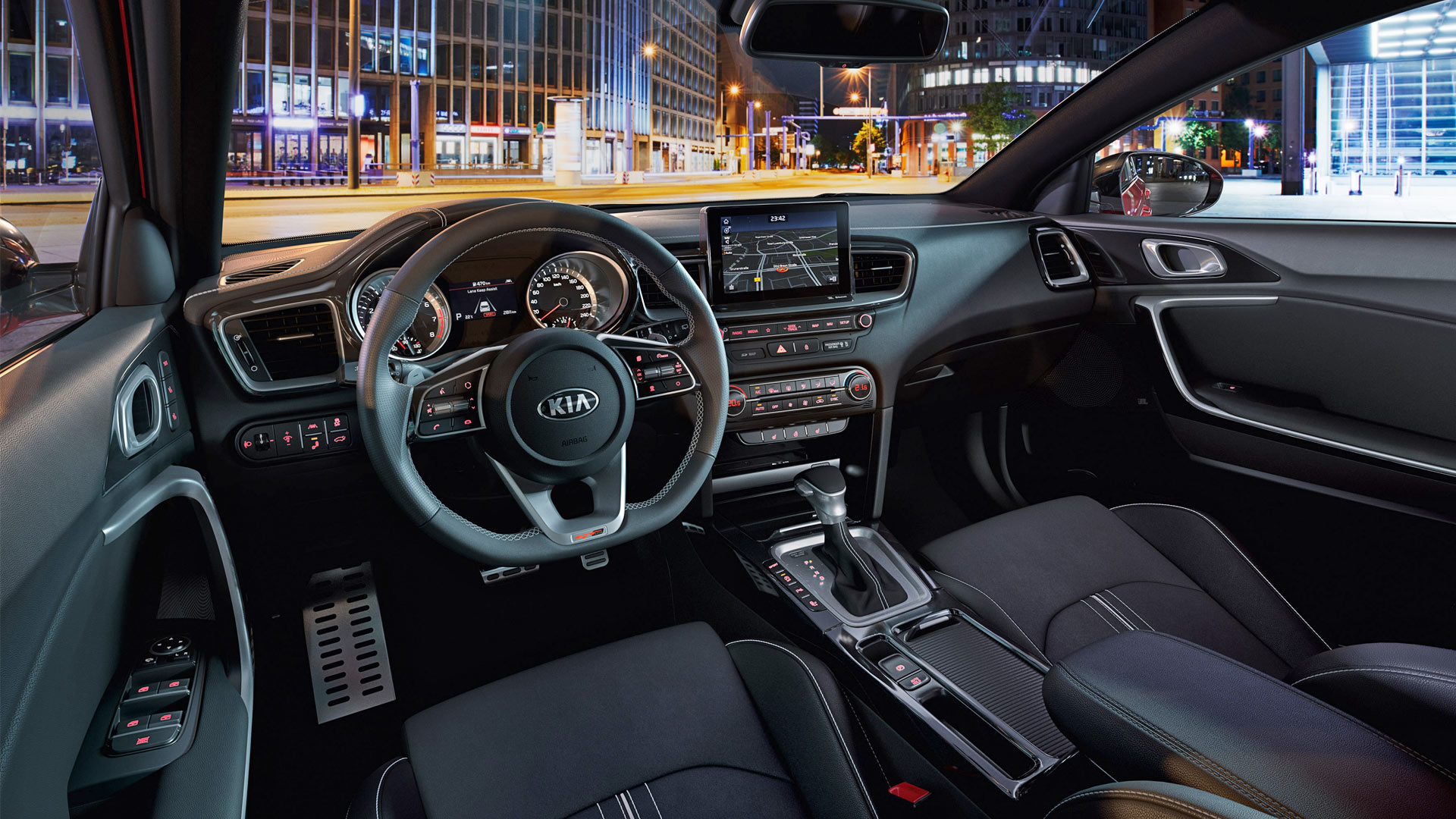
The driver-focused interior features 7.0-inch or 8.0-inch floating touchscreen infotainment system, smartphone integration with Apple CarPlay & Android Auto, flat-bottom steering wheel with GT logo, sports seat (GT) with larger, firmer side and thigh bolsters, and optional JBL Premium sound system with Clari-Fi.
More options include a heated windshield, wireless smartphone charger, heated front and rear seats, and front-seat ventilation.
Kia says that there’s enough space for the rear passengers. The lower hip-point (compared to Ceed and Sportswagon models) offsets the effects of the ProCeed’s lower roofline, creating head and legroom aplenty.
Powertrains
The ProCeed GT Line is available with a choice of three engines — 1.0-litre T-GDi with 120 hp and 172 Nm, 1.4-litre T-GDi with 140 hp and 242 Nm, and 1.6-litre CRDi with 136 hp and 280 Nm of torque. A 6-speed manual transmission is standard while the 1.4 can be had with a 7-speed dual-clutch automatic. The 1.6L produces 320 Nm with the automatic.
The sportier ProCeed GT is powered by a 1.6-litre T-GDi engine which produces 204 hp and 265 Nm of torque. It is paired with a 7-speed dual-clutch transmission with shift paddles. All ProCeed models appear to be front-wheel-drive.
For models equipped with the aforementioned 7-speed dual-clutch transmission, the Drive Mode Select system enables switching between Normal and Sport modes.
As with the Ceed, all ProCeed models are fitted with fully-independent suspension as standard. However, Kia says that an additional fine-tuning to the suspension geometry has given the ProCeed its own unique character within the Ceed range.
Albert and his team spent an additional 6 months enhancing its cornering agility and yaw behavior, and increased traction and steering responsiveness. This has been achieved with the adoption of stiffer front and rear springs to increase body control and improve steering inputs, and softer front and rear anti-roll bars to keep its inside wheels in contact with the road, even under hard cornering.
Safety
Safety kit includes standard 6 airbags, Vehicle Stability Management (VSM), ESC, High Beam Assist, Driver Attention Warning, and Lane Keeping Assist with Forward Collision-Avoidance Assist.
Lane Following Assist — a Level Two autonomous driving technology, Smart Cruise Control with Stop & Go, Blind Spot Collision Warning, Rear Cross-Traffic Collision Warning, Smart Parking Assist, and pedestrian recognition are all in the options list.

Leave a Reply
Note: Comments that are unrelated to the post above get automatically filtered into the trash bin.
